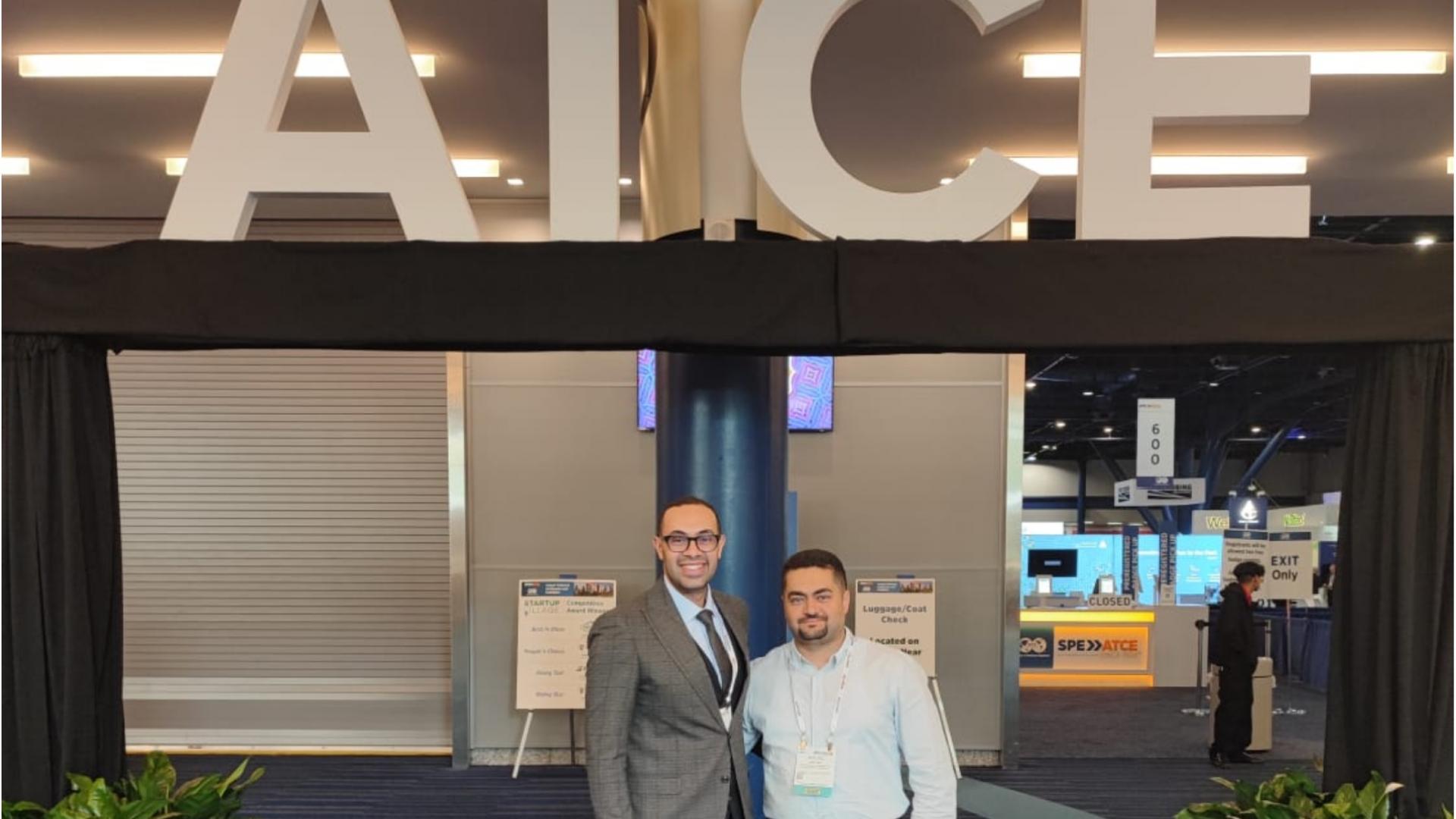Moutazbellah Khater and Tarek Mostafa participated in SPE Annual Technical Conference and Exhibition (ATCE) from 3-5 October 2022 in Houston, Texas. This flagship event is the highest caliber technical event for E&P professionals from around the globe. It was a great opportunity for Moutazbellah & Tarek to present their latest research papers where they pushed the limits of well-integrity and pipelines inspection to a new level.
Moutazbellah presented his paper entitled “Remote Field Eddy Current System Using Three Axis Fluxgate Magnetometer for Corrosion Inspection” while Tarek presented two papers entitled “A Transmitter-less Inspection Tool for Pipe Defect Detection and Characterization” and “A Comprehensive and Low-cost Tubulars Inspection Tool Using Electromagnetic Coupling and Machine Learning”.
Abstract:
Remote Field Eddy Current System Using Three Axis Fluxgate Magnetometer for Corrosion Inspection
Conventional remote field eddy current tools, which are developed for electromagnetic detection of corrosion on metallic pipes, use transmitter and receiver coils that are spaced apart by at least twice the inspected pipe's diameter. This large space and the low operation frequency required for electromagnetic fields to penetrate multiple casings weaken the voltage induced at the receiver. This challenge limits the quality of corrosion detection and characterization. In this work, a three-axis fluxgate magnetometer is used as a receiver to increase the sensitivity and to enable extraction of directional location of defect from measurements taken off axis. The improved sensitivity and the azimuthal detection capability for localized defects are confirmed by simulations and demonstrated experimentally in a single (4-1/2 in.) pipe and double pipes (4-1/2 in. inside a 7 in.) test setups. The limitations of current electromagnetic technologies in characterizing local defects beyond tubing are highlighted and the benefits of the proposed system are discussed.
Read full research paper published in One Petro
A Transmitter-less Inspection Tool for Pipe Defect Detection and Characterization
Pipe strings are commonly employed in the oil and gas sector, where they are subjected to immense strains and highly corrosive fluids. Electromagnetic (EM) based inspection tools are widely used and typically require one or more excitation sources (i.e., transmitter coil(s)), as well as sensing devices, which adds complexity and expense. By utilizing the inductive sensing principle, this work introduces a novel inspection method with no transmitter coil(s) capable of characterizing inner and full metal loss on the pipe's body. The proposed technique has been modeled and simulated using the commercial EM solver ANSYS Maxwell, as well as a proof of concept prototype, has been built. The results reveal that the tool could detect full and partial metal loss and fully characterize the defect's size, location, and depth.
Read full research paper published in One Petro
A Comprehensive And Low-cost Tubulars Inspection Tool Using Electromagnetic Coupling And Machine Learning
This work provides an advanced prototype for pipeline and wellbore tube inspection using electromagnetic (EM) resonance coupling, electromagnetic (EM) coupling, and machine learning. Utilizing only two transmitters and eight sensor coils, the described device can detect and characterize inner, outer, and total metal loss in a pipe's body. A defect in the pipe body alters the impedance of the transmitter and receiver coils and the mutual coupling between them, resulting in a relative change in one or more Rx outputs. A framework for artificial neural networks (ANN) is designed to assess the eight outputs and generate a two-dimensional map of the pipe cross-section. The ANN is trained using a finite-difference time-domain electromagnetic forward solver. The designed prototype is tested and validated through simulations and an experimental setup. The results demonstrate that the tool, with the assistance of the ANN, could not only detect single and double flaws with either complete or partial metal loss, but also define the defect's size, location, and depth.





